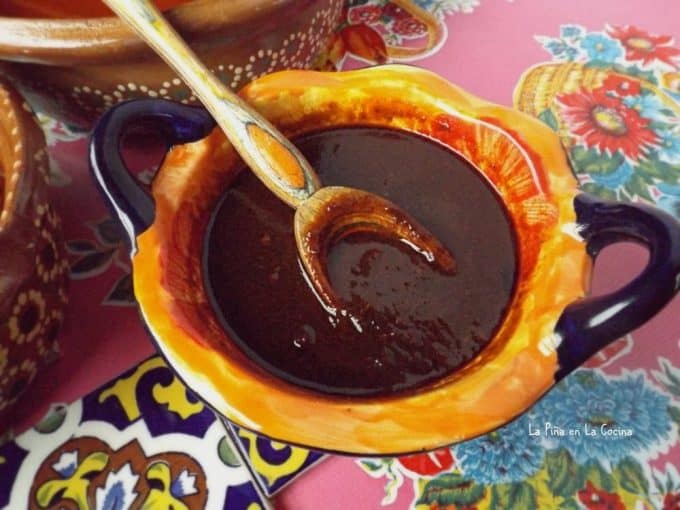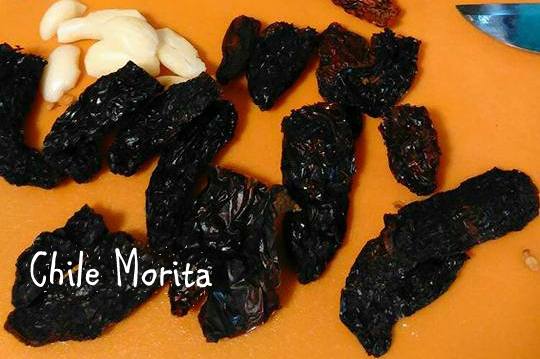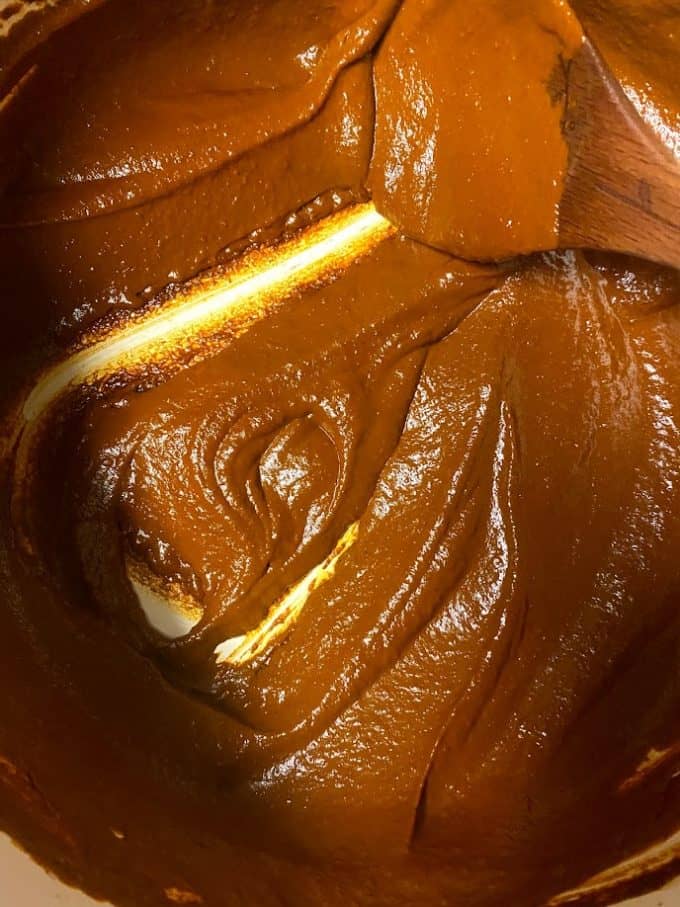Salsa negra begins with dried chiles. What inspired this post for salsa negra? A nice follower on Instagram asked me if I had a recipe for this salsa and surprisingly enough, I didn’t! Lol! So the wheels in my head begin to spin, grabbed my notebook and begin searching online. One thing is for sure, when one researches recipes online, there can be a wide spectrum between one recipe and the next

One thing I did gather from everything I read was that chile pasilla was one of the key ingredients. Next thing I did was message my good friend Mely at Mexico In My Kitchen . She’s is like a walking encyclopedia when it comes to authentic Mexican recipes. I explained to her the ingredients I was planning on using and she gave me some great tips on achieving that beautiful almost black color for this salsa negra!

Challenge Yourself To Learn!
I won’t lie, you must have a little patience when preparing this recipe. it does require constant attention and stirring, lol! Better the salsa, than a needy boyfriend, ha, ha, ha!! I prefer the salsa any day!

Salsa Negra!
I recently revisited this recipe and prepared it a few days ago. I have added some new images. The technique here is similar to cooking a mole sauce. Frying the salsa in oil or pork manteca will eventually yield a very dark color. Of course the flavors are concentrated and you will have a chile paste or salsa that will last for months!














Salsa Negra
Ingredients
Ingredients
- 4 large chile dried chile pasilla
- 12 chile dried chile morita
- 1/4 white onion roughly chopped
- 4-6 cloves of garlic smashed
- 1 cup avocado, grapeseed or canola oil
- 2 1/2 C water
- 1/4 cup of white vinegar
- Salt to taste
Instructions
Directions
- Remove the stems and seeds from the dried chiles and tear the chile pasilla into smaller pieces. Set aside. Chile morita typically comes with no stems. Leave seeds intact.
- To a sauce pan, add 1/4 cup of oil and heat to medium low. Add onion and garlic. Saute for 5-7 minutes. Add all the dried chiles and fry for 2 minutes. Cook until the chiles become aromatic and change slightly in color.
- Add 1 1/2 cups of water to the sauce pan and raise heat to medium. When it comes to a boil, reduce and simmer for 10 minutes. Remove from heat and let sit for 20 minutes.
- Transfer all of the ingredients including the liquid to the blender. I suggest blending for at least 1 minute, then scrape down the sides and blend again for 1 minute. Set aside. If you have a power blender, it will blend smoothly quickly.
- In a deep , heavy sauce pan, preheat 1/4 cup of oil to medium heat for a few minutes. Add the salsa from the blender It will be thick! Continue cooking the salsa, stirring often for the next 10-12 minutes.
- Pour in 1 cup of water to the blender and swish around. Try to get as much of the remaining salsa off the sides. Pour into pot, along with the 1/4 cup of vinegar. Stir well to combine and continue cooking for 10 minutes until it reduces.
- Mix in another 1/4 cup of oil and continue frying and reducing the salsa. Repeat cooking for another 10-12 minutes and then add more oil. Once again you are cooking it until it reduces and get very thick. When the salsa has cooked and fried enough, it will get darker, quickly. Season, to taste, with salt.
- Once the salsa is really dark in color, you can thin it out with some water or leave it as a thick paste. Remember to taste for salt if you add water. If adding the water, cook for a few more minutes. Once it has cooled, store in an airtight container refrigerated for a few months.
- If serving as a salsa, you can thin it out with some water or lime. If using as a marinade or an adobo, you can mix in spices like cumin, oregano, clove and cinnamon. Whisk it with a little olive oil for a quick seasoning or marinade on seafood or boneless chicken.
Notes
More New Photos!
This is what I had for lunch today! Oh, by the way, today is July 26, 2021!




Reader Interactions
Comments
Trackbacks
-
[…] Salsa Negra https://pinaenlacocina.com/salsa-negra/ […]
Love your recipes thank you so much
Thank you so much Maria!
Gracias Pinita!! I’m loving your blogs. Why not try frying the chiles in lard or tallow like our Abuelas cooked with? It tastes way better and is also Healthier for our bodies!!
If I had natural rendered pork lard. I would have, but avocado oil is the healthier option compared to that white pork lard that comes in a tub or brick.
Check out the Weston A Price Foundation website…they have local “Chapter Leaders” who keep lists of local providers of Traditional Foods, like real lard/pork!! https://www.westonaprice.org/category/get-involved/local-chapters/